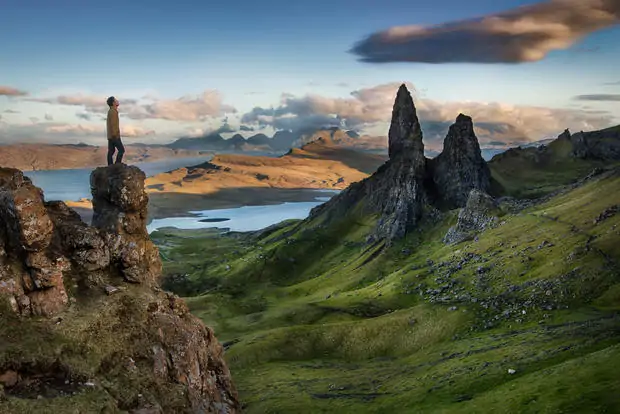As clocks turn back and the days get shorter, as temperatures in the Northern Hemisphere plummet and 2012 draws to a close, there’s no better time to strike a match and let the skies light up with colour and warmth.
To coincide with Hallowe’en and Bonfire Night in the UK, we’ve selected our 10 favourite fire festivals around the world.
Guy Fawkes Night (Bonfire Night), England
“Remember, remember the fifth of November – gunpowder, treason and plot” goes the nursery rhyme, chanted in the run-up to Guy Fawkes Night (November 5). It goes back to 1605 when Guy Fawkes, one of the members of the Gunpowder Plot, was arrested while guarding explosives in the Houses of Lords, London. With the plot to blow up the House of Lords – and kill King James I – foiled, Londoners lit bonfires around the city in celebration.
The bonfire tradition continues to this day, and usually there’s an effigy of Guy Fawkes placed at the centre of it. One of the biggest celebrations is in the town of Lewes in Sussex where, in recent years, effigies of various current figures, including those from the UK banking world, have been burned. Search and compare: cheap flights to England
Ottery St Mary, Devon, England
In the small town of Ottery St Mary in Devon, the bonfire and fireworks are not the focal point of the community’s celebrations, it’s the local townspeople carrying flaming barrels of tar through the streets. In a tradition that predates even 1605 it is said, 17 barrels are carried, starting in the afternoon with small barrels for boys, medium barrels for youths and women and “gert big unz” for the men.
Traditionally, the barrels are set on fire at pubs and hotels around the town and a strict schedule is followed until midnight when the final barrel is carried in the square. Search and compare: cheap flights to England
Up Helly Aa, Lerwick, Shetland Islands
Described as a Northern Mardi Gras, if you’ve ever wanted to see Vikings, this is the festival to see! Its origins stretch back 1,200 years, although the festival started in the 1870s. It’s held on the last Tuesday of January (29 January in 2013). On that evening, nearly 1,000 men march in ranks, carrying fencing posts topped in paraffin-soaked sacking. At 7.30pm, a rocket cresting over the Town Hall marks the start.
Torches are lit, bands start playing and the men march with the Guizer Jarl (the head of the festival) who stands at the helm of a longship. Dragged to the burning site, the Guizer Jarl will leave his ship for it to be set alight. As the longship is engulfed by flames, the Vikings sing The Norseman’s Home before heading to halls for feasts of mutton soup, bannocks and plenty of warming drinks. Search and compare: cheap flights to Edinburgh
Daizenji Tamataregu Shrine’s “Oniyo” (Fire Festival), Japan
Fukuoka, capital of Fukuoka Prefecture on Kyushu Island, is one of Japan’s largest cities and hosts one of its oldest fire festivals. Daizenji Tamataregu Shrine’s “Oniyo” is a ceremony to drive away evil spirits (a “tsuina”), one that has been practiced for 1,600 years. It’s held in early January each year. A “devil fire” that has been guarded at the temple is transferred – at around 9pm on the seventh day (January 7) – to six massive torches measuring one metre in diameter and 15 metres long.
The torches are transported around the grounds of the shrine by a group of men in loincloths. It sounds like a potential health-and-safety issue, but it’s considered to be good luck if embers or ash from the torches falls on them. Search and compare: cheap flights to Fukuoka
Jeongwol Daeboreum Deulbul Festival, Jeju Province, South Korea
In early February, the Jeongwol Daeboreum Deulbul Festival takes place on the island of Jeju off the coast of South Korea. It’s a fairly new festival, younger than 20 years old, but its origins go back to the time when families kept cows.
To keep the grass grazeable, farmers set fire to the fields in the mountains to destroy old grass and kill harmful insects. Today, a hilltop is set alight to pray for health and a good harvest in the coming year. There’s a torchlight march, straw-rope making competition and deumdol (rock) lifting. Search and compare: cheap flights to Korea
Diwali, India
The best-known Hindu festival is known as the “festival of lights”. Diwali (or Deepavali) means “rows of lighted lamps” and during this time, houses, shops and public places are decorated with diyas (small earthenware oil lamps), elaborate feasts are prepared and spectacular fireworks displays light up the skies.
The five-day festival celebrates the triumph of good over evil and is celebrated throughout India and around the world (in Singapore, Trinidad and Tobago, Mauritius, Myanmar and London among many others). Search and compare: cheap flights to India
Quema del Diablo (Burning of the Devil), Guatemala
In early December Guatemalans ready themselves for the Christmas season by … driving the Devil from their homes and burning him in the streets! For centuries – at least since the 1700s – the traditional ceremony has been performed to chase bad spirits from homes and neighbourhoods.
By watching bonfires, firework displays and burning devil figures in the streets, locals say they are spiritually cleansing themselves. The tradition is best experienced in Guatemala City and Antigua but many towns throughout Guatemala host similar ceremonies. Search and compare: cheap flights to Guatemala City
Bonfire Night, Newfoundland, Canada
When English and Irish people, in search of a better life, crossed the Atlantic Ocean to Canada, they took their traditions with them. The English took Guy Fawkes night, the Irish took Samhain and over time the traditions merged into Mischief Week.
With a belief that certain types of naughty behaviour (soaping windows, taking pins from gate hinges or stealing old tyres for bonfires) is permitted at this time, many of Newfoundland & Labrador’s close-knit communities hold bonfires and celebrations. Search and compare: cheap flights to Newfoundland and Labrador
Samhain 2012 – Out of the Darkness, Altoona, Florida, USA
More than 500 pagans gather in Florida for the state’s largest pagan festival. Running between October 31 and November 4 at Camp Ocala, each day is filled with feasting, rituals, drumming, dancing and live entertainment.
The main ritual in 2012 is centred around the “Burning Times” when so-called “witches” were put to death. Search and compare: cheap flights to Florida
Sadeh, Iran
Sadeh (or Jashn-e Sadeh) is an ancient Zoroastrian festival. While it refers to 100 days and nights before the New Year (Nowruz, which falls on the Vernal Equinox, March 20 or 21), it is celebrated 50 days earlier – around the end of January. It honours the discovery of fire that defeated the forces of darkness and cold.
Traditionally, festivities went on for three days and gifts of food were given to the poor. Today, Zoroastrians light bonfires, perform religious rituals around them and thank God for his blessings. It’s usually celebrated in the Kushk-e Varjavand gardens in Karaj (in Tehran province) where members of the Zoroastrian community congregate for the festivities. Search and compare: cheap flights to Iran
(Featured image: anthonycramp)



